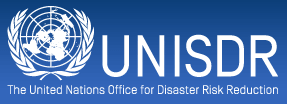11 February 2016: Government representatives and disaster risk reduction (DRR) practitioners met to continue work on developing a set of indicators to measure progress in implementing the Sendai Framework for DRR to ensure its goals are being met up to 2030.
To assess progress in meeting the goals, countries will have to have a common understanding of what they are measuring regarding both the scale of the problems faced and the impact of DRR efforts.
 11 February 2016: Government representatives and disaster risk reduction (DRR) practitioners met to continue work on developing a set of indicators to measure progress in implementing the Sendai Framework for DRR to ensure its goals are being met up to 2030. To assess progress in meeting the goals, countries working to come up with a common understanding of what they are measuring regarding both the scale of the problems faced and the impact of DRR efforts.
11 February 2016: Government representatives and disaster risk reduction (DRR) practitioners met to continue work on developing a set of indicators to measure progress in implementing the Sendai Framework for DRR to ensure its goals are being met up to 2030. To assess progress in meeting the goals, countries working to come up with a common understanding of what they are measuring regarding both the scale of the problems faced and the impact of DRR efforts.
Discussions took place during the second meeting of the Open-Ended Intergovernmental Expert Working Group on Indicators and Terminology Relating to DRR, which met from 9-11 February 2016, in Geneva, Switzerland. The first session took place in September 2015 and another session will take place later in 2016. The group is expected to develop a common classification of types of hazards, such as meteorological events like storms, threats like earthquakes, bio-hazards including disease outbreaks, and manmade disasters caused by industrial accidents.
Julio Serje, UN Office for Disaster Risk Reduction (UNISDR), presented on the proposed indicators, including equations to measure economic losses in a range of sectors and ways to ensure data is gathered consistently down to the local level. He said DRR must be given “granularity,” and stressed simplicity to ensure countries are not overburdened with data collection.
Wayne McCook, Jamaica’s UN ambassador and Chair of the Working Group, said the indicators will be the primary method of tracking progress in meeting the Sendai targets “ so that they are not just an empty set of commitments or promises” but something tangible that can be met by specific measures, actions and assessments.
The Working Group made progress on targets related to mortality, economic losses and infrastructure, and emphasized that the success or failure of the Sendai Framework will depend on enhancing DRR capacity of developing countries via international cooperation.
The ‘Sendai Framework for Disaster Risk Reduction 2015-2030,’ was adopted in March 2015 at the 3rd World Conference on Disaster Risk Reduction (WCDRR) held in Sendai, Japan, includes seven targets and four priorities for action. The Framework seeks to reduce disaster deaths, the number of affected people, economic losses, damage to critical infrastructure and disruption to basic services, such as health and educational facilities. It also aims to increase the number of countries with national and local risk reduction strategies, developing country capacity and coverage by early warning systems. The meeting was organized by UNISDR. [UNISDR Press Release, 11 February] [UNISDR Press Release, 9 February] [IISD RS Coverage of WCDRR] [WCDRR Website]